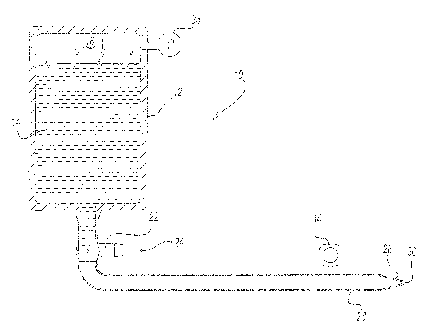Some of the information on this Web page has been provided by external sources. The Government of Canada is not responsible for the accuracy, reliability or currency of the information supplied by external sources. Users wishing to rely upon this information should consult directly with the source of the information. Content provided by external sources is not subject to official languages, privacy and accessibility requirements.
Any discrepancies in the text and image of the Claims and Abstract are due to differing posting times. Text of the Claims and Abstract are posted:
| (12) Patent: | (11) CA 2370449 |
|---|---|
| (54) English Title: | WATER JET |
| (54) French Title: | HYDROJET |
| Status: | Term Expired - Post Grant Beyond Limit |
| (51) International Patent Classification (IPC): |
|
|---|---|
| (72) Inventors : |
|
| (73) Owners : |
|
| (71) Applicants : |
|
| (74) Agent: | SMART & BIGGAR LP |
| (74) Associate agent: | |
| (45) Issued: | 2011-01-04 |
| (22) Filed Date: | 2002-02-04 |
| (41) Open to Public Inspection: | 2002-08-14 |
| Examination requested: | 2006-11-06 |
| Availability of licence: | N/A |
| Dedicated to the Public: | N/A |
| (25) Language of filing: | English |
| Patent Cooperation Treaty (PCT): | No |
|---|
| (30) Application Priority Data: | ||||||
|---|---|---|---|---|---|---|
|
A water jet is disclosed having a tank which forms a reservoir
containing a liquid, such as water. An elongated conduit has one end fluidly
connected to the reservoir while a nozzle is connected to the other end of the
conduit. This nozzle, furthermore, has an opening with a cross-sectional area
less than the cross-sectional area of the conduit. A valve is connected in
series
between the conduit and the reservoir, and this valve is movable between an
open and a closed position. The reservoir is pressurized to a pressure in the
range of 30-300 psi so that, once the valve is opened, water flows through the
conduit and out through the nozzle at a high pressure and high speed water
jet.
This water jet can be used, inter alia, to clean industrial parts, such as
engine
blocks.
Dispositif de jet d'eau doté d'un réservoir contenant un liquide, comme de l'eau. Un conduit allongé comporte une extrémité raccordée au réservoir qui permet au liquide de s'écouler tandis qu'une buse est raccordée à l'autre extrémité du conduit. La buse comporte aussi une ouverture dont le diamètre est inférieur à celui du conduit. Un robinet-vanne est connecté en série entre le conduit et le réservoir. Le robinet-vanne peut s'ouvrir et se fermer. Le réservoir est sous pression, à une pression de 30 à 300 livres par pouce carré. Lorsque le robinet-vanne est ouvert, l'eau s'écoule par le conduit et sort en un jet par la buse à haute pression et à haute vitesse. Le jet d'eau peut servir, entre autres choses, à nettoyer des pièces industrielles comme des blocs-moteurs.
Note: Claims are shown in the official language in which they were submitted.
Note: Descriptions are shown in the official language in which they were submitted.

2024-08-01:As part of the Next Generation Patents (NGP) transition, the Canadian Patents Database (CPD) now contains a more detailed Event History, which replicates the Event Log of our new back-office solution.
Please note that "Inactive:" events refers to events no longer in use in our new back-office solution.
For a clearer understanding of the status of the application/patent presented on this page, the site Disclaimer , as well as the definitions for Patent , Event History , Maintenance Fee and Payment History should be consulted.
| Description | Date |
|---|---|
| Inactive: Expired (new Act pat) | 2022-02-04 |
| Common Representative Appointed | 2019-10-30 |
| Common Representative Appointed | 2019-10-30 |
| Change of Address or Method of Correspondence Request Received | 2018-01-12 |
| Maintenance Request Received | 2017-02-03 |
| Inactive: Late MF processed | 2014-02-07 |
| Letter Sent | 2014-02-04 |
| Grant by Issuance | 2011-01-04 |
| Inactive: Cover page published | 2011-01-03 |
| Pre-grant | 2010-10-05 |
| Inactive: Final fee received | 2010-10-05 |
| Notice of Allowance is Issued | 2010-04-15 |
| Letter Sent | 2010-04-15 |
| Notice of Allowance is Issued | 2010-04-15 |
| Inactive: Approved for allowance (AFA) | 2010-03-31 |
| Amendment Received - Voluntary Amendment | 2009-09-16 |
| Inactive: S.30(2) Rules - Examiner requisition | 2009-03-17 |
| Letter Sent | 2006-11-27 |
| Request for Examination Received | 2006-11-06 |
| Request for Examination Requirements Determined Compliant | 2006-11-06 |
| All Requirements for Examination Determined Compliant | 2006-11-06 |
| Inactive: IPC from MCD | 2006-03-12 |
| Inactive: IPC from MCD | 2006-03-12 |
| Application Published (Open to Public Inspection) | 2002-08-14 |
| Inactive: Cover page published | 2002-08-13 |
| Inactive: First IPC assigned | 2002-04-19 |
| Inactive: Filing certificate - No RFE (English) | 2002-03-05 |
| Filing Requirements Determined Compliant | 2002-03-05 |
| Letter Sent | 2002-03-05 |
| Letter Sent | 2002-03-05 |
| Application Received - Regular National | 2002-03-05 |
There is no abandonment history.
The last payment was received on 2010-01-28
Note : If the full payment has not been received on or before the date indicated, a further fee may be required which may be one of the following
Please refer to the CIPO Patent Fees web page to see all current fee amounts.
Note: Records showing the ownership history in alphabetical order.
| Current Owners on Record |
|---|
| VALIANT CORPORATION |
| Past Owners on Record |
|---|
| ANDREW NOESTHEDEN |